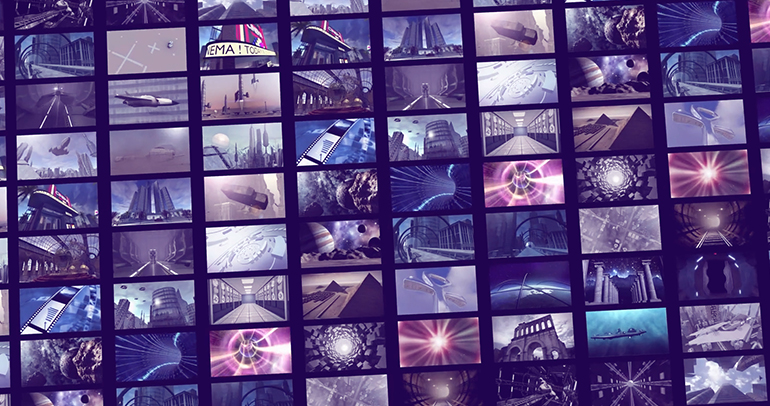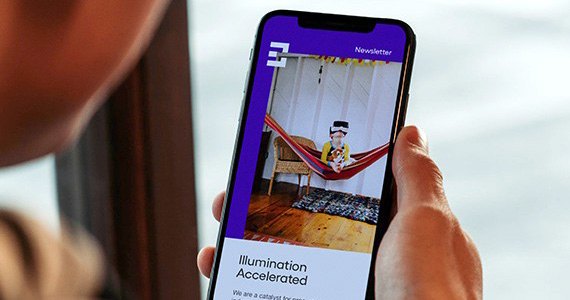
During the CHARGE – Powering Energy Brands 2025 conference, I presented insights from our Cogent Syndicated Utility Trusted Brand & Customer Engagement study about how younger customers—in this case, defined as under-35-year-olds—differ from older customers and what energy companies need to do to better serve these younger customers. Uniquely, my presentation was followed by a panel discussion including Natalia, Varun and Brian, Rice University MBA candidates for the class of 2026, and Mya, an early-career professional at Schneider Electric, so we could hear directly from younger consumers about what’s meaningful for them.
While it’s been written ad nauseam, it’s worth noting that younger customers are far more demographically diverse than older customers. While 84% of customers age 55+ in our study identify as white (and not Hispanic), fewer than half of customers age 18 to 34 identify as white, including just 37% of 18- to 24-year-olds. This diversity extends across other demographic factors, from education to work-from-home status to the type of home younger consumers live in.
What Younger Customers Really Want From Their Energy Providers
This demographic diversity translates into diverse lived experiences and expectations for customers’ energy provider. For example, when we asked respondents what types of characteristics describe an “ideal” utility, “reliable service” is far and away #1 among all customers. For younger customers, it’s still #1 but only one percentage point ahead of “a great value.”
Younger consumers instead put a lot more importance on a wider array of characteristics that, to them, makes an “ideal” utility, including:
“Makes you comfortable.”
This isn’t just about physical comfort—being warm or cool enough in their home—it’s also mental comfort. As an example of this, one 18-to-24-year-old respondent noted “phone calls are not comfortable for all customers.”
“Problem solvers.”
This isn’t just in the reactive sense; younger customers also want their energy provider to proactively come to them with solutions about things they might not even know are a problem, such as a high-bill notification before the end of the billing cycle.
“Locally focused.”
Younger consumers want to see their energy provider active in and engaged with their community.
The panel echoed these diverse expectations; when asked what’s important to them in energy, Varun said it was important to him that it was “sustainable,” while Brian said “reliable” and Natalia said she wants to see energy companies be “innovative.”
How Younger Customers Are Personalizing Their Energy Experience
Younger customers have acted on these diverse expectations and personalized their relationship with their energy company by adopting different programs, service channels and communication channels at a much higher degree than older customers. For instance, 18-to-24-year-old customers use 61% more voluntary offerings from their energy provider than customers 35 and older. They also report using 59% more customer service channels over the last six months than older customers.
Despite the higher engagement implied by this greater personalization, we see in the data a smaller positive impact to brand loyalty among younger consumers who feel like their experience with their energy company is personalized to them than we see for older customers. This can, at least in part, be explained by the concept of generational hedonic adaptation. Hedonic adaptation is the behavioral science concept that people return quickly to a “base level” of happiness—so, for example, if you offer a new program that delights customers when it’s released, it’s not necessarily a durable source of delight because customers will simply come to expect that from you. Generational hedonic adaptation is the idea that younger customers don’t have a frame of reference for “how things used to be”; the way things are today forms their base set of expectations. As such, younger customers are harder to please and delight than older customers, who can better appreciate how energy providers have evolved their services and engagement over time.
Understanding Your Future Energy Customers: Three Actions Energy Providers Can Take Now
So, what does an energy provider need to do in the face of these findings? We think there are three key implications:
- Energy providers must get really good at segmentation to deeply understand your different customers and how you can best serve them.
- You also need to double down on providing options that allow your customers to personalize their experience—this is across the board, everything from rates to billing and payment to programs that fit different living situations. These options for personalization will allow energy providers to be in younger consumers’ consideration set for decisions they may make about participating in different programs or buying different energy technologies.
- Finally, energy providers need to realize that, even in monopoly service territories, younger consumers are going to be very open to other ways to get their energy—for example, purchasing a home energy package from an automaker like Tesla—and thus energy providers are operating in an increasingly competitive environment. This means you’ll need to refine your marketing strategy to ensure you reach younger customers where they are with messages that move them down a purchase or adoption funnel with your company.
The panelists also spoke of the value of communication in these efforts. Mya, for instance, said she is “enjoying the amount of communication [she’s] getting about what [her] utility is doing to invest in reliability.” Brian, on the other hand, suggested that energy companies need to step up their game on communication. He said they need to “communicate clearly and honestly. Take ownership of the things you do wrong in addition to communicating the brand.”
To learn how our energy industry experts can support your segmentation research and help you refine your strategy to engage and delight your future energy customers , please fill out the form below.
Want to learn more? Let’s connect.








